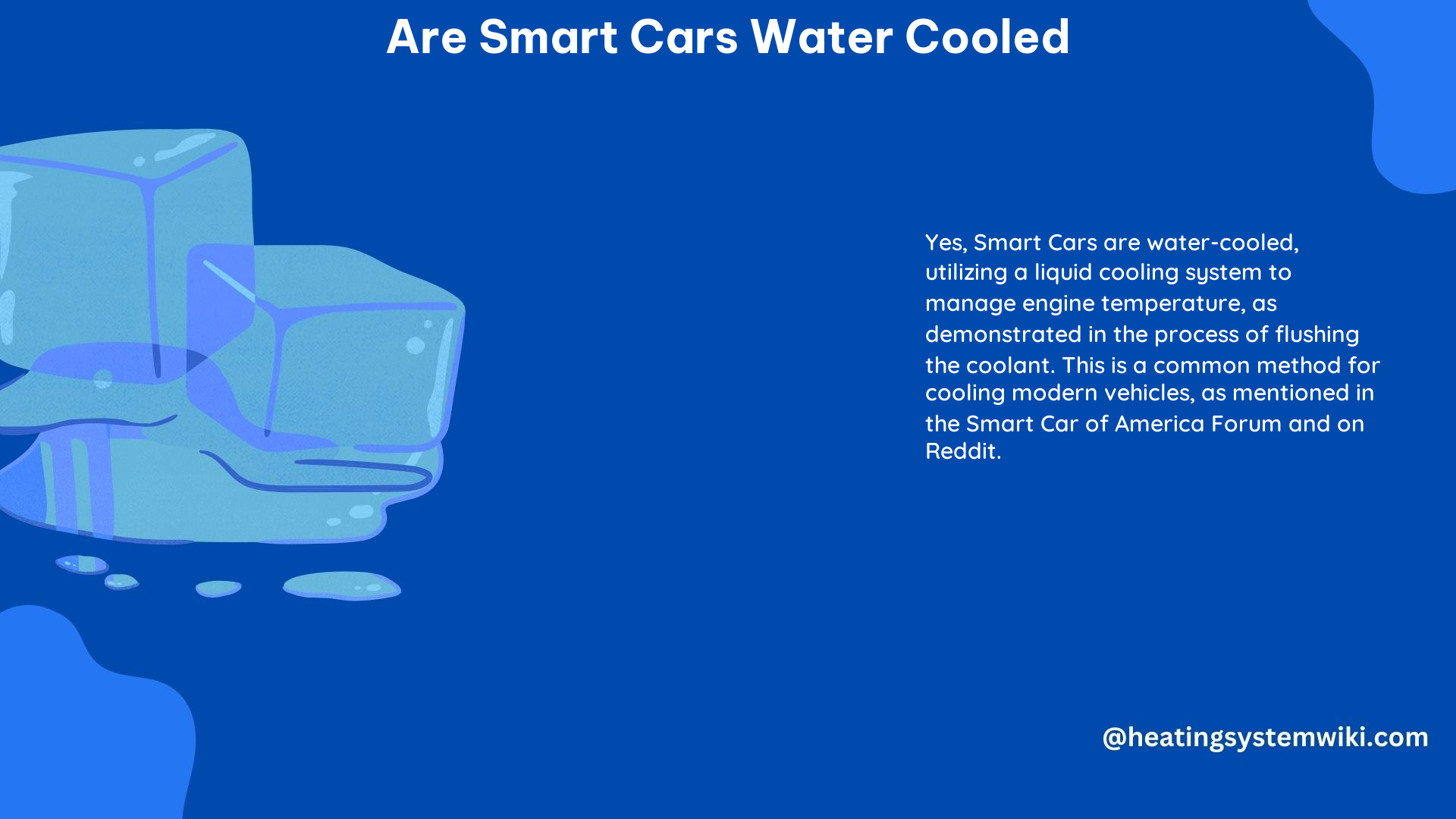Smart cars are known for their compact size and fuel-efficient design, but one of the key features that sets them apart is their water-cooled engine system. This article will delve into the technical details of how the water cooling system in Smart cars works, its advantages, and how it compares to other cooling methods.
Understanding the Smart Car Water Cooling System
The water cooling system in Smart cars is designed to efficiently dissipate the heat generated by the engine during operation. The system consists of several key components:
-
Radiator: The radiator is located at the front of the vehicle, behind the grille. It is responsible for transferring the heat from the coolant to the surrounding air, effectively cooling the engine.
-
Water Pump: The water pump circulates the coolant through the engine block and the radiator, ensuring a continuous flow of the cooling medium.
-
Thermostat: The thermostat regulates the temperature of the coolant, opening and closing to maintain the optimal operating temperature for the engine.
-
Coolant Hoses: The coolant hoses connect the various components of the water cooling system, allowing the coolant to flow between the engine, radiator, and other parts.
-
Coolant: The coolant, typically a mixture of water and antifreeze, is the medium that absorbs the heat from the engine and transfers it to the radiator.
The water cooling system in Smart cars is designed to quickly cool specific parts of the engine, as cooling efficiency is directly related to the surface area and the thermal conductivity of the cooling medium. Water, with its higher thermal conductivity compared to air, is more effective at dissipating heat from the engine components.
Advantages of Water Cooling in Smart Cars

-
Improved Cooling Efficiency: The water cooling system in Smart cars is more efficient at dissipating heat than air-cooled systems, allowing the engine to operate at optimal temperatures even under high-load conditions.
-
Increased Power Output: The ability to maintain lower engine temperatures allows for higher compression ratios and more advanced engine designs, resulting in increased power output.
-
Consistent Performance: Water cooling helps maintain a consistent engine temperature, ensuring stable and reliable performance, even in varying environmental conditions.
-
Compact Design: The water cooling system in Smart cars is designed to be compact and integrated into the vehicle’s overall layout, contributing to the car’s small footprint.
-
Reduced Noise: Water-cooled engines tend to be quieter than air-cooled engines, as the water cooling system dampens the noise generated by the engine.
Comparison to Air Cooling
While water cooling is the primary cooling method used in Smart cars, it’s worth noting the differences between water cooling and air cooling:
| Feature | Water Cooling | Air Cooling |
|---|---|---|
| Cooling Efficiency | Higher | Lower |
| Power Output | Higher | Lower |
| Noise Level | Lower | Higher |
| Complexity | Higher | Lower |
| Maintenance | Higher | Lower |
Both water cooling and air cooling systems require air to function effectively, as the radiator or air-cooled components need airflow to dissipate the heat. This can be a challenge when the vehicle is stationary, especially after high-performance driving, as the lack of airflow can lead to overheating.
Maintenance and Troubleshooting
Maintaining the water cooling system in a Smart car is essential to ensure its longevity and optimal performance. Regular checks and maintenance tasks include:
- Coolant Level Inspection: Regularly check the coolant level in the expansion tank and top it up as needed.
- Coolant Replacement: Replace the coolant according to the manufacturer’s recommended schedule, typically every 2-3 years.
- Radiator Inspection: Inspect the radiator for any signs of damage, leaks, or blockages, and clean it as necessary.
- Water Pump Inspection: Check the water pump for proper operation and replace it if necessary.
- Thermostat Replacement: Replace the thermostat if it is not functioning correctly, as it plays a crucial role in regulating the coolant temperature.
If issues arise with the water cooling system, such as overheating or coolant leaks, it’s important to address them promptly to prevent further damage to the engine. Consulting a qualified mechanic or the vehicle’s manufacturer for guidance on troubleshooting and repair is recommended.
Conclusion
In conclusion, Smart cars are indeed water-cooled, with a sophisticated cooling system designed to efficiently dissipate the heat generated by the engine. This water cooling system offers several advantages, including improved cooling efficiency, increased power output, and reduced noise levels. While it requires more maintenance compared to air-cooled systems, the benefits of water cooling make it a crucial component in the overall design and performance of Smart cars.
Reference:
– Smart Car Cooling System: How It Works and Why It Matters
– Understanding the Cooling System in a Smart Car
– Smart Car Engine Cooling System: Radiator, Water Pump, and More
